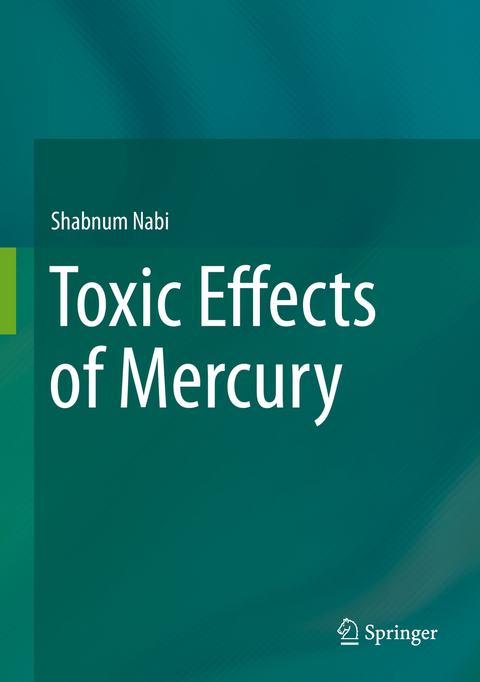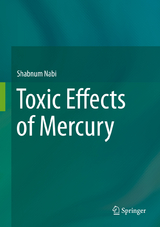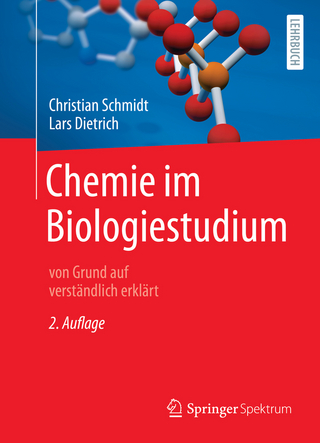Toxic Effects of Mercury
Springer, India, Private Ltd (Verlag)
978-81-322-1921-7 (ISBN)
This book will provide state-of-the-art information to the graduate students training in toxicology, risk assessors, researchers and medical providers at large. It is aimed to bring the readers updated information on contemporary issues associated with exposure to methylmercury, from its effects on stem cells and neurons to population studies. It is a valuable resource for individuals interested in the public health effects and regulation of mercury. The report provides an excellent example of theimplications of decisions in the risk assessment process for a larger audience and is written with the hope that the information will provide better understanding of the mercury problems which confront us.
Dr. Shabnum has obtained her Ph.D. degree in Zoology (Cytogenetics) in 2012. The prime focus of her research has been Neurotoxicity, Genotoxicity and Neurobehavioral toxicity. She is the author of several papers published in reputed and peer-reviewed journals. Besides having National and International conferences to her credit, she is the member of Zoological Society of India. She has participated as a young scientist in a congregation of Nobel Prize Winners at IIIT Allahabad. She has also availed a Research Fellowship (J.R.F.) from University Grants Commission (U.G.C.), New Delhi.
Unit I: History of Mercury Toxicology.- Chapter 1: Occurrence and Properties.- Chapter 2: Estimated Applications.- Chapter 3: Distribution, Metabolism and Excretion.- Chapter 4: Toxicological Effects and Remedy.- Chapter 5: Antioxidant Drugs Mitigating Toxicity.- Chapter 6: Mercury and Cognition.- Unit Ii: Review of Literature.- Chapter 7: Exposure, Sources and Intoxication.- Chapter 8: Methylmercury and Oxidative Stress.- Unit Iii: Toxicity Evaluation Methodology.- Chapter 9: Materials and Analytical Procedures.- Chapter 10: Biochemical Estimation Techniques.- Chapter 11: Neurobehavioral Assessment Models.- Unit Iv: Free Radical Stress: Chapter 12: Mercury as a Source of Reactive Oxygen Species.- Chapter 13: Promotion of Peroxidation and Hydroperoxidation of Lipids.- Chapter 14: Summary and Conclusions.- Unit V: Toxic Responses of Antioxidant Defense System.- Chapter 15: Endogenous Antioxidants.- Chapter 16: Deregulation of Antioxidant Activities.- Unit Vi: Systemic Toxicology.- Chapter 17: Toxic Responses of the Plasma Total Antioxidant Power (Frap).- Chapter 18: Toxic Responses of the Plasma Xanthine Oxidase (Xo).- Chapter 19: Toxic Responses of the Plasma Glutathione Peroxidase (Gshpx).- Unit Vii: Neurobehavioral Toxicology: Chapter 20: Impairment of Emotional Behavior.- Chapter 21: Connection to Anxiolytic Behavior and Reflex Movements.- Chapter 22: Effects on Depression Like Behavior.- Unit Viii: Genetic Toxicology.-Chapter 23: Micronucleus Test (Mnt).- Chapter 24: Chromosomal Aberrations.- Unit Ix: Methylmercury Toxicity and Linked Diseases.- Chapter 25: Methylmercury and Minamata Disease.- Chapter: Methylmercury and Alzheimer’s Disease.- Chapter 27: Methylmercury and Parkinson’s Disease.- Chapter 28: Methylmercury and Thimerosal.- Chapter 29: Thimerosal l and Occurrence of Autism.- Chapter 30: Methylmercury and Lupus.- Chapter 31: Methylmercury and Amyotrophic Lateral Sclerosis.- Chapter 32: Mercury Pollution prevention.
| Erscheint lt. Verlag | 13.8.2014 |
|---|---|
| Zusatzinfo | 48 Illustrations, color; 15 Illustrations, black and white; XXV, 268 p. 63 illus., 48 illus. in color. |
| Verlagsort | New Delhi |
| Sprache | englisch |
| Maße | 178 x 254 mm |
| Themenwelt | Naturwissenschaften ► Biologie ► Biochemie |
| Naturwissenschaften ► Biologie ► Zellbiologie | |
| Naturwissenschaften ► Biologie ► Zoologie | |
| ISBN-10 | 81-322-1921-X / 813221921X |
| ISBN-13 | 978-81-322-1921-7 / 9788132219217 |
| Zustand | Neuware |
| Informationen gemäß Produktsicherheitsverordnung (GPSR) | |
| Haben Sie eine Frage zum Produkt? |
aus dem Bereich




